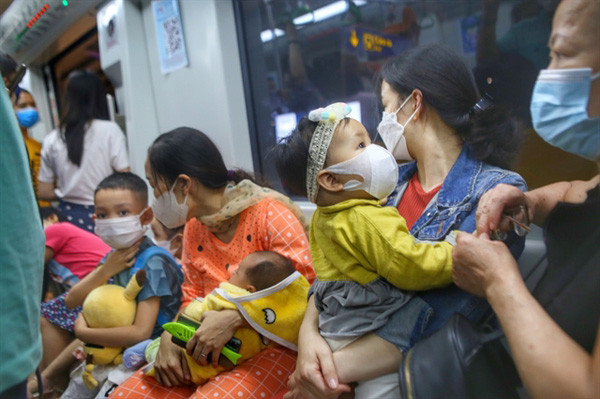
According to an audited financial report, the company’s revenue from selling tickets reached only VND5.3 billion ($229,000). However, the cost of labour and services to operate the urban railway was VND58.9 billion ($2.54 million).
One of the causes is that the project is yet to receive subsidies from the authorities for its operation.
Vu Hong Truong, general director of the company, told Zing online that the nature of "revenue does not guarantee operating costs," and the urban railway would be subsidised by the authorities similar to buses.
Truong said the revenue of urban railways failing to cover operating costs was common worldwide.
He revealed that even on record-busy days like April 30 and May 1, with the number of passengers up to 53,000 visitors daily, the revenue from selling the tickets was still not enough to cover operating costs.
The company was completing procedures to receive the subsidies from the authorities as per regulations, he said.
After receiving the subsidies, the company's financial situation would be different because the subsidies would not only make up for the shortfall but also ensure the company makes a profit, he said.
Nguyen Anh Tuan, a lecturer from the University of Transport, said the metro was a form of "symbiotic" transport, so a single-line metro would struggle to attract passengers.
Therefore, the delay in constructing and operating other metro lines in the city would also contribute to causing losses on the Cat Linh – Ha Dong urban railway line, he said.
As scheduled, this year, the company sets a revenue target of VND476 billion ($20.5 million), nearly 90 times higher than last year, and a pre-tax profit target of more than VND17 billion ($734,000).
The company also plans to operate an elevated section of the Nhon - Hanoi Railway Station line, serving more than 7.9 million passengers this year.
After 202 days of operation, from November 6, 2021, to May 26, 2022, the Cat Linh – Ha Dong urban railway carried more than 3.1 million passengers, equal to an average of 15,633 passengers per day.
The number of train passengers is about 21,000-22,000 on a typical day, 25,000-30,000 at the weekend, and 40,000-50,000 on holidays.
The rate of trains running on time is 99.98 per cent. The average rate of passengers taking monthly tickets is about 55 to 60 per cent.
Source: Vietnam News